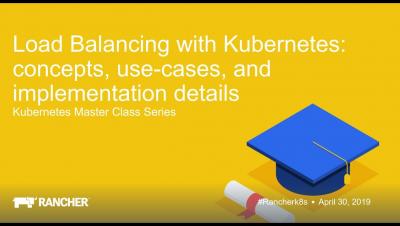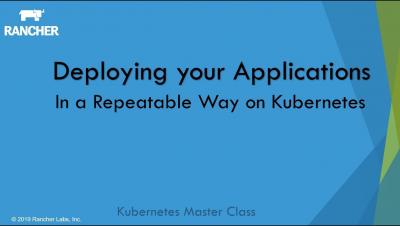Operations | Monitoring | ITSM | DevOps | Cloud
April 2019
Announcing k3OS: A Kubernetes Operating System
Today we launched a new open source project called k3OS. K3OS is a Linux distro built for the sole purpose of running Kubernetes clusters. In fact, it is a Linux distro and the k3s Kubernetes distro in one! As soon as you boot up a k3OS node, you have Kubernetes up and running. When you boot up multiple k3OS nodes, they form a Kubernetes cluster. K3OS is perhaps the easiest way to stand up Kubernetes clusters on any server.
Using GitLab Auto DevOps with Kubernetes Through Rancher's Authorized Cluster Endpoint
In this post, we will walk through how to connect GitLab’s Auto DevOps feature with a Rancher-managed Kubernetes cluster, making use of a feature introduced in Rancher v2.2.0 called Authorized Cluster Endpoint. Readers can expect to walk away with an understanding of how GitLab integrates with Kubernetes and how Rancher simplifies this workflow with Authorized Cluster Endpoint.
Comparison of Container Operating Systems
Containers have rapidly become a necessary part of the modern data center. Containers can be built on any of a number of operating system foundations — so how do you choose one over another?
Understanding the Kubernetes Node
With over 48,000 stars on GitHub, more than 75,000 commits, and with major contributors like Google and Red Hat, Kubernetes has rapidly taken over the container ecosystem to become the true leader of container orchestration platforms. Kubernetes offers great features like rolling and rollback of deployments, container health checks, automatic container recovery, container auto-scaling based on metrics, service load balancing, service discovery (great for microservice architectures), and more.
The era of multi-cluster multi-cloud Kubernetes has arrived!
Today Google announced Anthos, a new cloud service with the ability to manage Kubernetes clusters across multiple cloud providers, including AWS and Azure. This is super exciting news for Rancher. In Google Anthos, we see great alignment with Rancher’s vision. We believe Kubernetes will become the standardized infrastructure provided by all public and private clouds, and an enterprise Kubernetes platform must deliver multi-cluster, multi-cloud management.
Native Kubernetes Monitoring, Part 2: Scaling and Life Cycle Management
This article is a follow up to Native Kubernetes Monitoring, Part One. In this chapter we’ll finish the two remaining demos for the other built-in tools, Probes and Horizontal Pod Autoscaler (HPA).
Native Kubernetes Monitoring, Part 1: Monitoring and Metrics for Users
Kubernetes is an open-source orchestration platform for working with containers. At its core, it gives us the means to do deployments, easy ways to scale, and monitoring. In this article, we will talk about the built-in monitoring capabilities of Kubernetes and include some demos for better understanding.
April 2019 Online Meetup: An Introduction to the Features of Rancher 2.2
The Business Case for Container Adoption
Developers often believe that demonstrating the need for an IT-based solution should be very easy. They should be able to point to the business problem that needs a solution, briefly explain what technology should be selected, and the funds, staff, and computer resources will be provided by the organization. Unfortunately, this is seldom the actual process that is followed.








